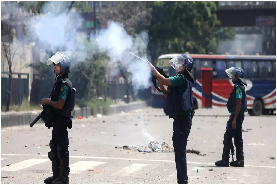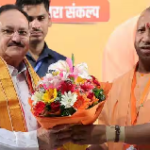Violence escalating in Bangladesh has prompted the police to receive orders to “shoot on sight,” resulting in at least 115 fatalities and numerous injuries. To regain control, authorities have imposed a strict countrywide curfew effective until Sunday morning.
India has termed the continuing violent agitation in Bangladesh as an “internal matter” of Dhaka. But it also said it was closely watching the situation as there are 15,000 Indians there, of whom 8,500 are students. The Ministry of External Affairs on Wednesday said all Indians in Bangladesh were safe.
Meanwhile, 88 more Indians have returned home from riot-torn Bangladesh via Meghalaya. On Friday, 363 people, including Indians and Nepalese, arrived at the Dawki Integrated Check Post in Meghalaya.
Protests against quotas began among student groups a week ago to demand the scrapping of the system that sets aside up to 30 percent of government jobs for relatives of veterans who fought in Bangladesh’s 1971 War of Independence against Pakistan.
There now exists a giant challenge for Prime Minister Sheikh Hasina’s government, which came into power back in 2009. According to reports, these protests are the worst that the country has seen in more than a decade.
Curfew imposed at midnight
The authorities imposed a curfew from midnight Thursday and provided relaxation of two hours from noon to 2 PM for people to run some essential errands. Associated Press reports that the countrywide curfew will continue until 10 AM on Sunday.
An AFP report has updated the death toll from 100 to 115.
Lawmaker Obaidul Quader announced that police have been instructed to “shoot on sight,” authorizing them to fire on mobs as deemed necessary. Officials brought in the curfew in a bid to rein in the violence after police clashed with protesters at university campuses in Dhaka and other cities. All gatherings and demonstrations were banned.
On Saturday, 186 people stranded in Bangladesh amidst protests returned to India through the Dawki Integrated Check Post in Meghalaya’s Jaintia Hills district. Of these, 88 were Indian and 98 Nepalese.



